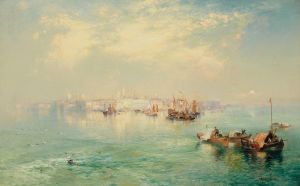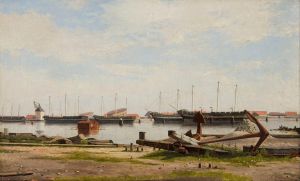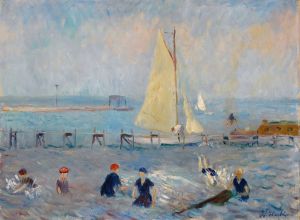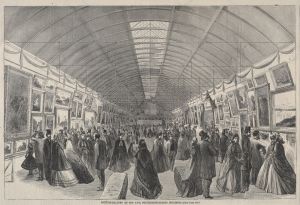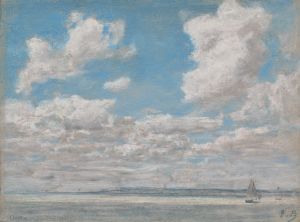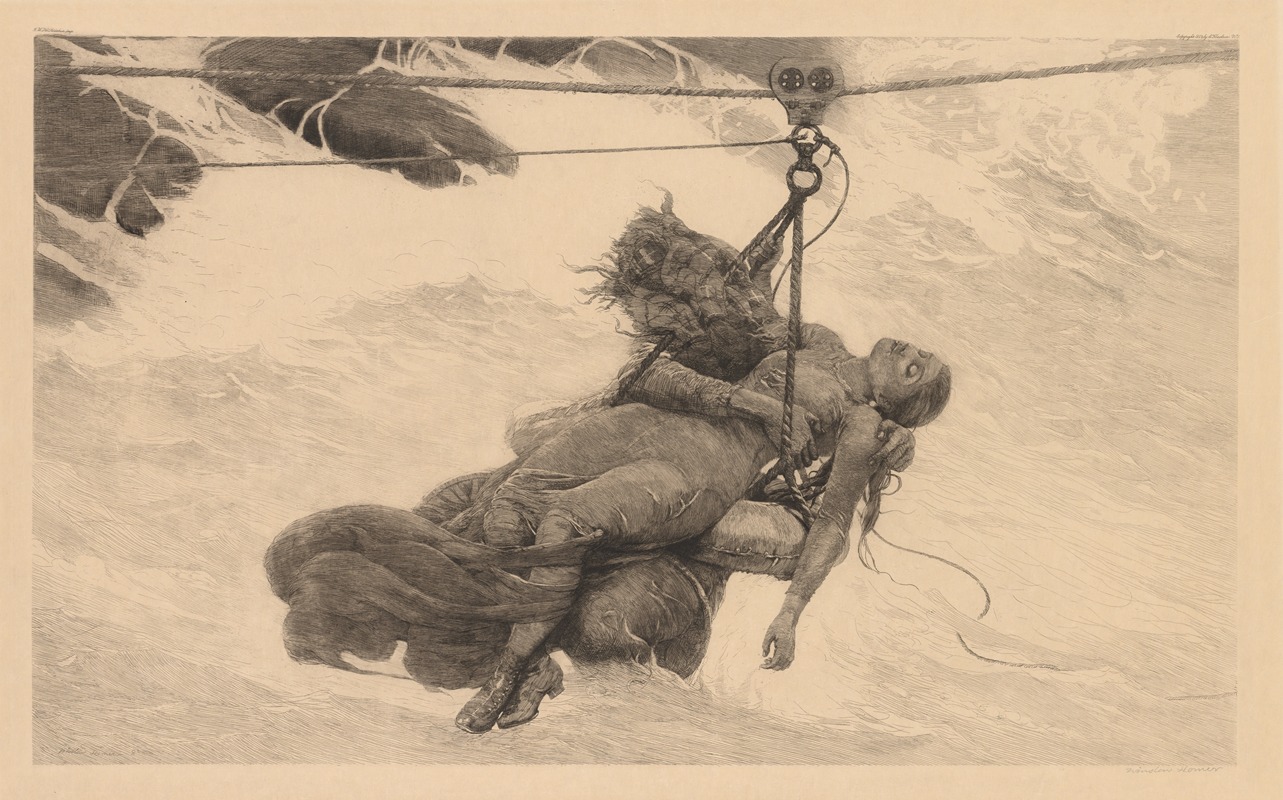
Saved
A hand-painted replica of Winslow Homer’s masterpiece Saved, meticulously crafted by professional artists to capture the true essence of the original. Each piece is created with museum-quality canvas and rare mineral pigments, carefully painted by experienced artists with delicate brushstrokes and rich, layered colors to perfectly recreate the texture of the original artwork. Unlike machine-printed reproductions, this hand-painted version brings the painting to life, infused with the artist’s emotions and skill in every stroke. Whether for personal collection or home decoration, it instantly elevates the artistic atmosphere of any space.
"Saved by Winslow Homer" is an oil painting created by the American artist Winslow Homer in 1889. Homer, known for his realistic and often dramatic depictions of American life and landscapes, particularly focused on maritime subjects during this period of his career. This painting is one of his notable works that exemplifies his mastery in capturing the peril and heroism associated with the sea.
The painting portrays a dramatic rescue scene at sea. It depicts a sailor being saved from the turbulent waters by a lifeboat crew. The composition is dynamic, with the rough, churning waves and the intense expressions of the rescuers and the rescued conveying a sense of urgency and danger. The use of light and shadow in the painting enhances the dramatic effect, highlighting the struggle between man and nature.
Homer's attention to detail is evident in the realistic rendering of the figures and the sea. The lifeboat crew is shown in action, their muscles straining as they pull the sailor from the water. The sailor, drenched and exhausted, clings to the lifeboat, his face a mix of relief and exhaustion. The sea, depicted in dark, swirling hues, adds to the tension of the scene, emphasizing the perilous conditions.
"Saved by Winslow Homer" reflects the artist's deep interest in the themes of survival and human resilience. This painting, like many of Homer's works, was influenced by his time spent in coastal communities, particularly in Maine and the fishing village of Cullercoats in England. These experiences provided him with firsthand observations of the sea and the lives of those who depended on it, which he translated into his art with great authenticity.
The painting is also notable for its technical excellence. Homer's use of oil paint allows for rich textures and depth, capturing the movement of the water and the physicality of the figures. His brushwork varies from broad, sweeping strokes for the waves to finer, more precise lines for the details of the figures and the boat.
"Saved by Winslow Homer" is housed in the Worcester Art Museum in Worcester, Massachusetts. It remains a significant piece in Homer's oeuvre, illustrating his ability to convey powerful narratives through his art. The painting is a testament to his skill in depicting the human condition and the natural world with equal sensitivity and intensity.
Overall, "Saved by Winslow Homer" is a compelling example of Winslow Homer's maritime paintings, showcasing his talent for capturing dramatic moments and his deep understanding of the sea and those who navigate it.





